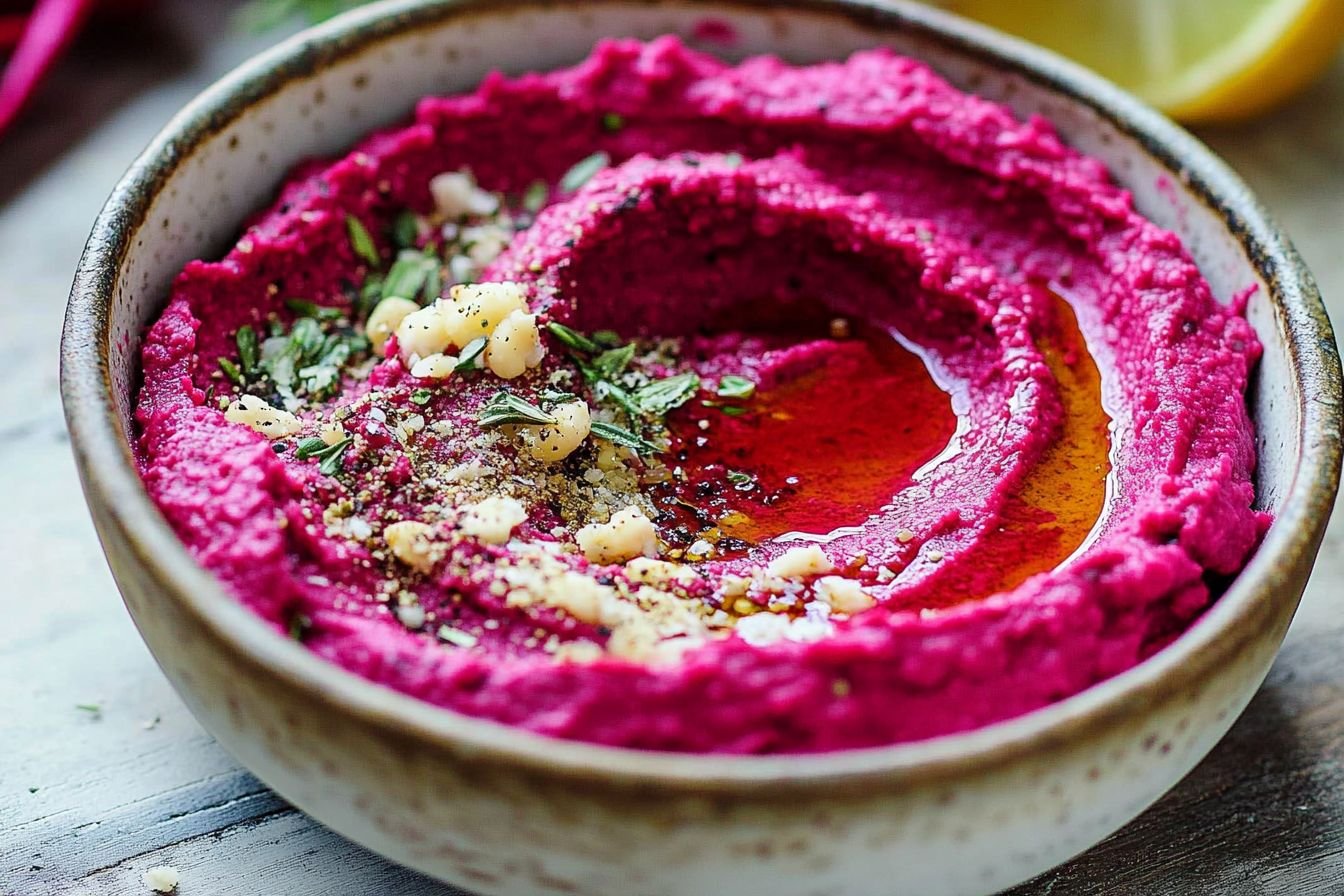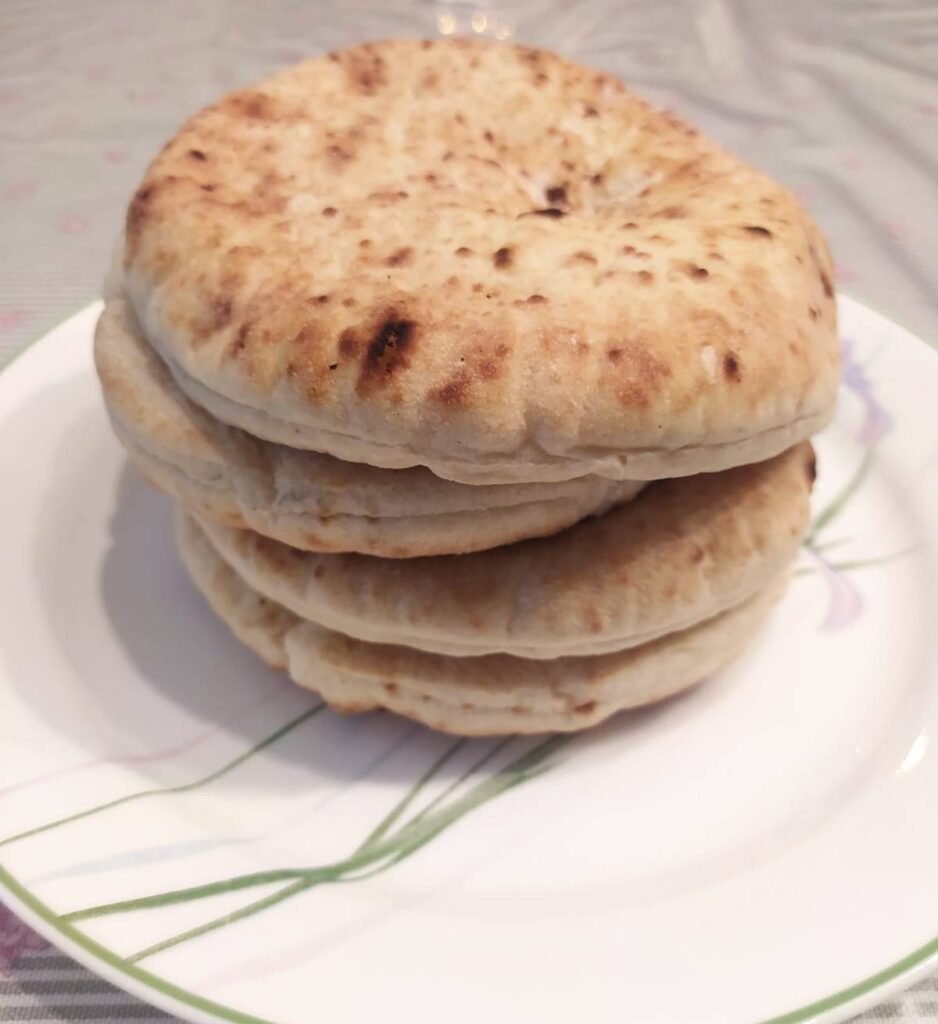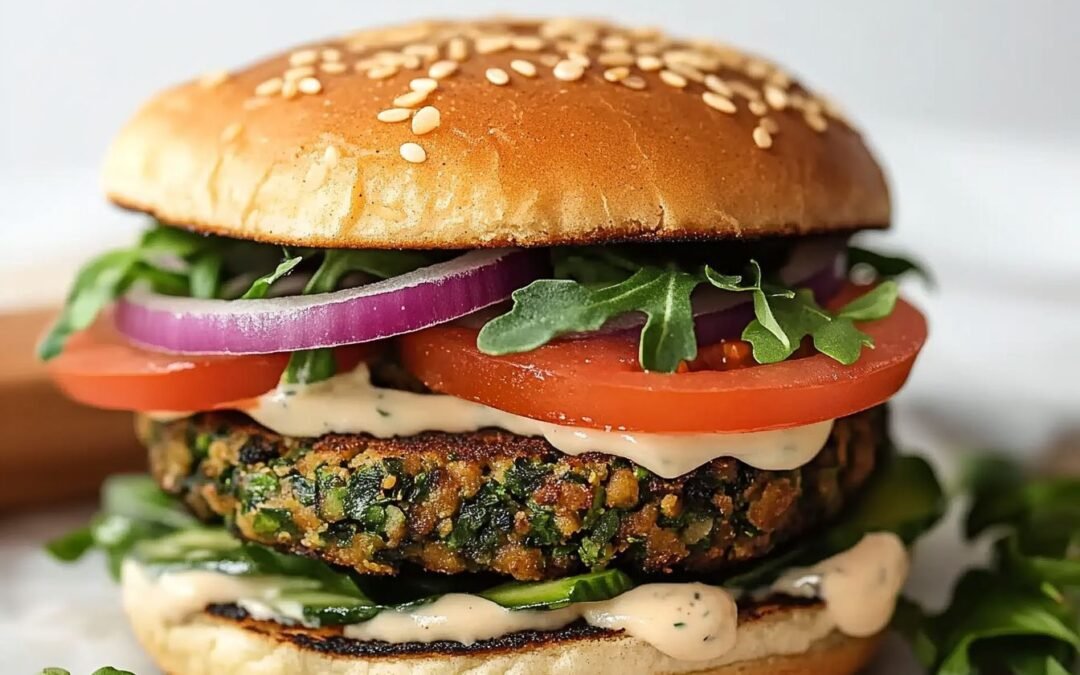Beetroot hummus is a colorful twist on the classic dip that brightens your spread and enhances your nutritional intake. You’ll need chickpeas, cooked beetroots, garlic, lemon zest and juice, tahini, olive oil, salt, and ground cumin to make this delicious treat. The combination of earthy beets and creamy chickpeas creates a flavor profile that is both refreshing and satisfying.
I love serving it at gatherings; it’s visually striking and a great conversation starter. Plus, it’s simple to prepare and offers a healthy alternative to more traditional dips. Whether you enjoy it with fresh veggies, pita bread, or even as a sandwich spread, this hummus adds a pop of color and nutrition to any meal.
If you’re curious about how to make this eye-catching dish and want to learn more about its benefits, keep reading! You might just find your new favorite appetizer.
What Is Beetroot Hummus?
Beetroot hummus is a modern twist on a centuries-old Middle Eastern classic, hummus, which originated in the Levant region and has been enjoyed for thousands of years. Traditional hummus is made from blended chickpeas, tahini, olive oil, lemon juice, and garlic.
The addition of beetroot, however, is a more contemporary adaptation that gained popularity in the late 20th and early 21st centuries as global cuisine became more experimental and health-conscious. The earthy root vegetable adds a striking pink hue and enhances the nutritional profile of the dish with antioxidants, vitamins, and minerals.
This is believed to have first emerged in the health food scenes of the Mediterranean and Middle Eastern diaspora communities before gaining wider popularity in Western countries, where it became a staple in vegan and health-conscious diets.
Ingredients
- 1 can of chickpeas (15 oz), drained and rinsed
- 2 medium cooked beetroots, cut into quarters
- Zest and juice from 1 medium lemon
- 2 cloves of garlic
- 2-3 tbsp of tahini
- 2-3 tbsp of olive oil
- ¼ tsp of salt
- ½ tsp of ground cumin
How To Make Beetroot Hummus
- To start, I like to chop the beetroots, chickpeas, and garlic. Then, I toss them into a food processor. I process them for about a minute until everything is nicely ground up.
- Next, I add the remaining ingredients. I blend everything until it’s creamy. A little graininess is okay; it gives it character! If I find it too thick, I add extra tahini or water to reach my preferred consistency.
- I always taste and adjust the seasonings if needed. I might add more salt, cumin, olive oil, or lemon juice to enhance the flavor.
- Once I’m happy with it, I scrape the hummus into a serving bowl. I love serving it at room temperature. If I’m making it ahead of time, I store it in an airtight container in the fridge.
- My hummus stays fresh for about 4-5 days when properly covered. Enjoy!
Nutritional Information
| Nutrient | Amount per 100g |
|---|---|
| Calories | 164 |
| Protein | 5g |
| Carbohydrates | 17g |
| Cholesterol | 0mg |
| Dietary Fiber | 5g |
| Fat | 8g |
| Sugar | 3g |
Based on a serving size of 1/6 of the recipe
Creative Serving Ideas
Veggie Platter
I often pair it with fresh vegetables. Carrot sticks, cucumber slices, and bell pepper strips create a vibrant platter. The crunchiness complements the creamy texture perfectly.
Sandwich Spread
Using it as a sandwich spread is delightful. I layer it on whole-grain bread, add avocado, and top it with greens. It makes for a filling and nutritious lunch.
Pinwheel Bites
For a fun appetizer, I spread this hummus on a tortilla, sprinkle it with spinach, and roll it up. Slicing them into pinwheels creates a visually appealing snack.
Pasta Toss
I love using it in pasta dishes. Mixing it with warm pasta gives a creamy and flavorful twist. Adding veggies, like cherry tomatoes and spinach, enhances the dish further.
With Grains
Serving it over grains like quinoa or farro is another favorite. I drizzle a little olive oil on top and sprinkle with herbs for added flavor.
Pairing With Other Foods
Dipping Options:
- Vegetable Sticks: Carrots, cucumbers, and bell peppers create a refreshing crunch.
- Pita Bread: Warm or toasted pita adds a delightful texture.
Spreads and Toppings:
- Sandwiches: Use it as a spread for sandwiches or wraps. It adds color and flavor.
- Toast: Spread it on whole-grain toast, topped with avocado for added creaminess.
Salads:
I love adding this hummus to salads. It serves as a dressing or a unique component.
Proteins:
- Grilled Chicken: The earthy notes complement grilled meats beautifully.
- Falafel: Pairing falafel with this hummus creates a satisfying meal.
Garnishes:
I like to top it with feta cheese, pumpkin seeds, or fresh herbs like dill for extra flavor.
Cheese Pairing:
Try it with goat cheese or cream cheese for a creamy contrast.
Storing And Preserving
Refrigeration Guidelines
I typically store the dip in an airtight container to keep it fresh. It’s best to consume it within 5 to 7 days when kept in the refrigerator.
To ensure optimal flavor, I recommend a temperature of below 4°C (39°F). If I find the hummus is thickening, I add a splash of water or a drizzle of olive oil before serving.
Labeling the container with the date can help me track freshness. To prevent cross-contamination, I always use clean utensils when serving.
Freezing Instructions
When I need to store it for a longer period, freezing is the way to go. I place it in a freezer-safe container, leaving about an inch of space at the top since it may expand when frozen.
It can last for up to 3 months in the freezer. To thaw, I usually transfer it to the refrigerator overnight.
Once thawed, I give it a good stir. If it seems a bit dry, I mix in olive oil or water to restore its creamy consistency. For convenience, I sometimes portion it into smaller containers that are easy to thaw as needed.
Common Mistakes And Troubleshooting
- Too Thick Consistency: If the hummus is too thick, I add more liquid. This could be water, olive oil, or even lemon juice. Start with a tablespoon at a time until the desired creaminess is achieved.
- Bland Flavor: Sometimes, the flavor can be a bit flat. I recommend adjusting the seasoning. Adding extra salt, lemon juice, or garlic can elevate the taste. Taste as I go to find the right balance.
- Grainy Texture: If the texture is grainy, it might be due to under-blending. I usually blend longer to achieve a smoother consistency. If all else fails, adding a tablespoon of tahini can help.
- Color Issues: Be careful with the cooking process of beetroot. Overcooking can lead to dull color. I steam or roast my beets for the best vibrancy.
- Separation: If the hummus separates after a while, it may need a little remixing. I give it a good stir before serving. Storing it in an airtight container helps maintain its texture.
Conclusion
Beetroot hummus is a delightful twist on the classic recipe. Its color and unique flavor make it a standout choice for any gathering.
It is tasty and offers health benefits. Beetroot is rich in essential nutrients that can enhance well-being.
The preparation is quite simple, making it accessible for anyone. I enjoy experimenting with different spices and ingredients to customize my hummus.
Whether served as an appetizer or a snack, it brings a cheerful touch to the table. It’s easy to share and even easier to enjoy!
As you might know, one of the most common pairings with this dip is pita bread
Here is a recipe for a homemade fluffy pita (click the image below)






